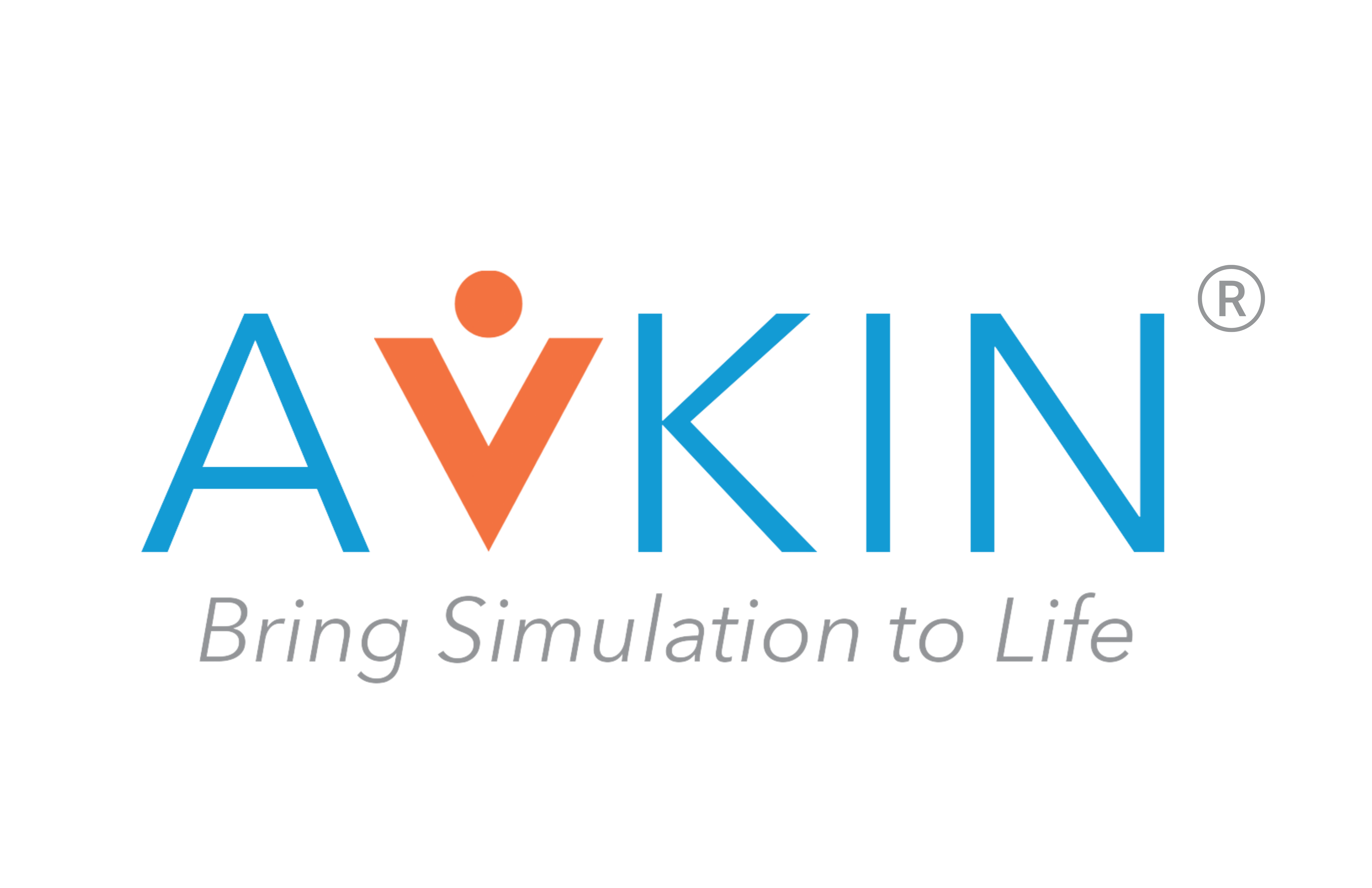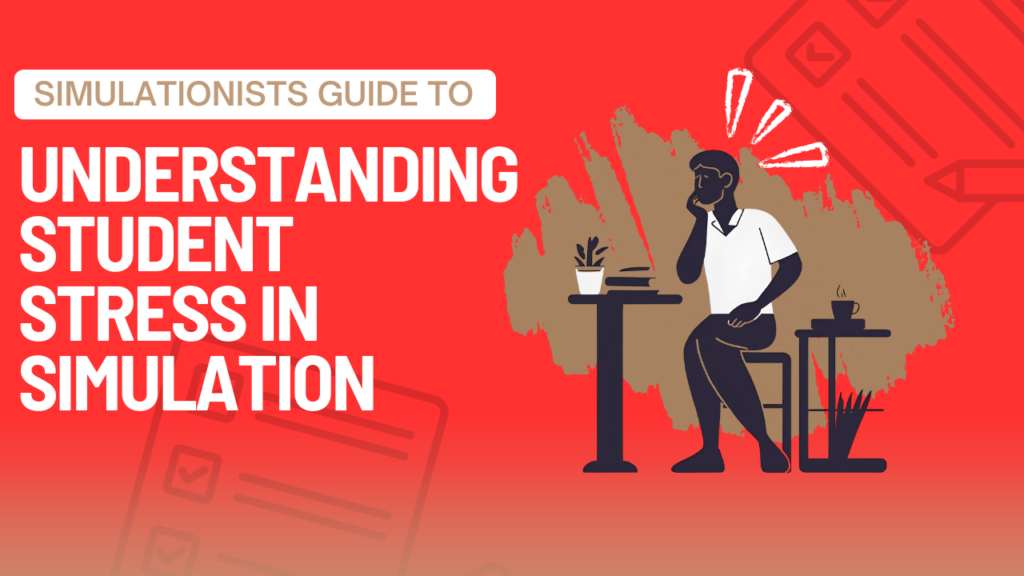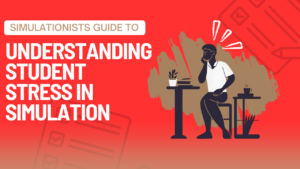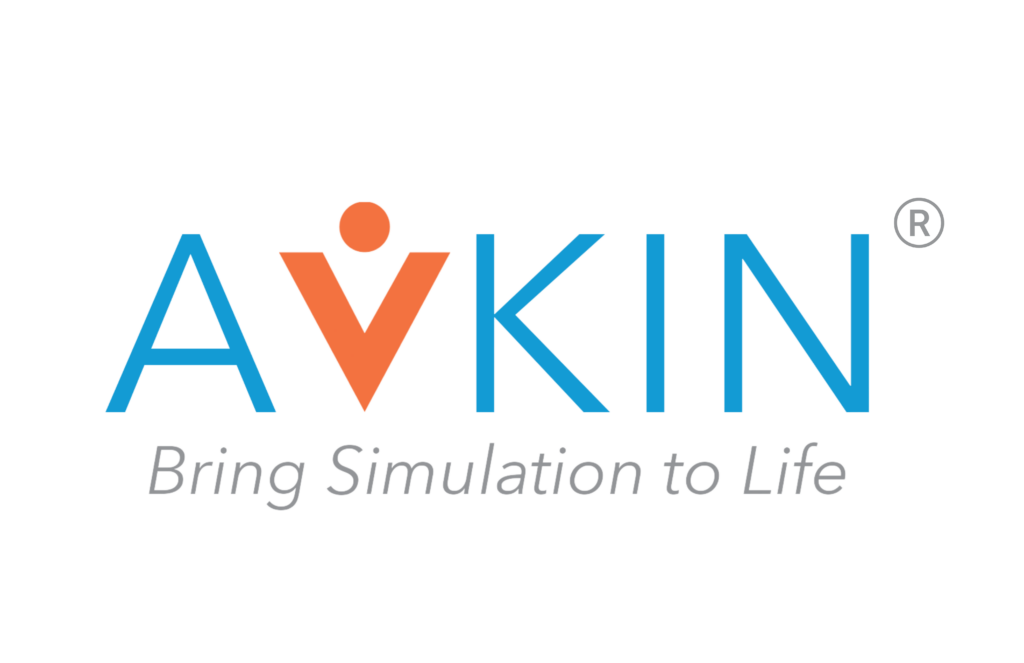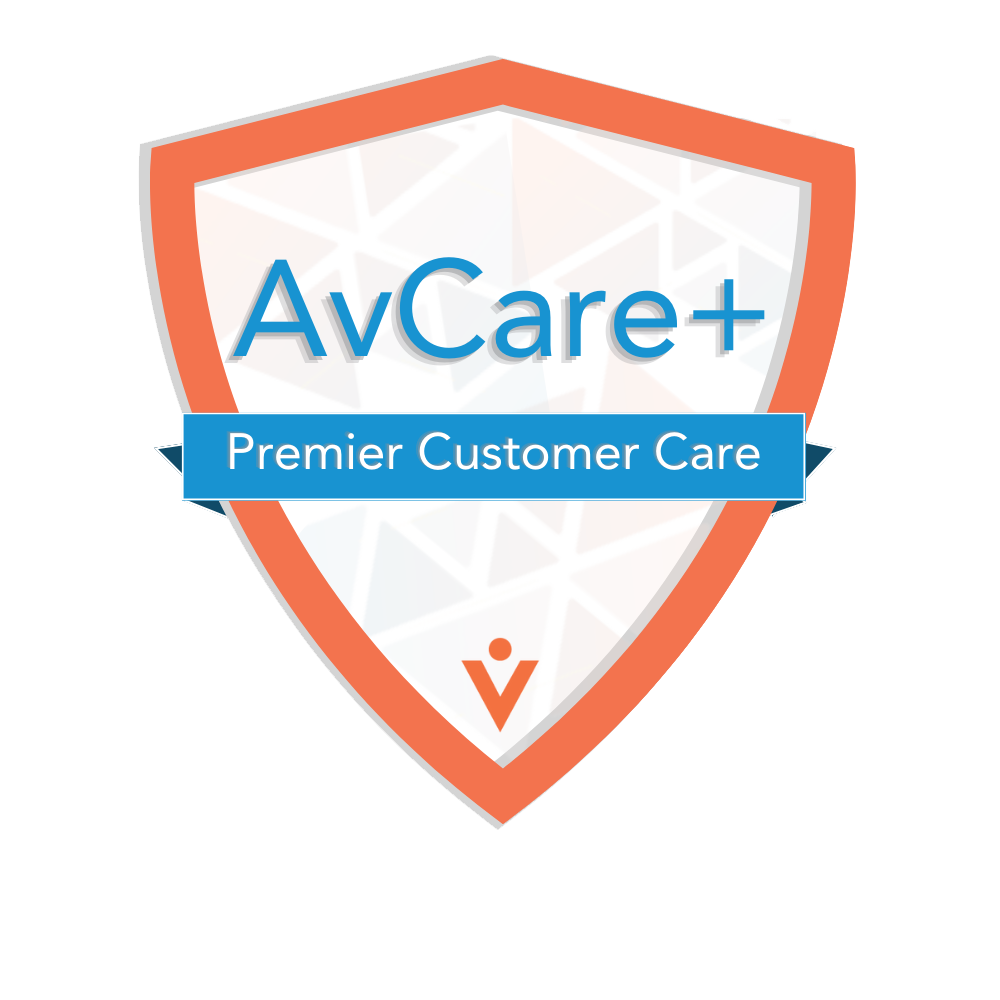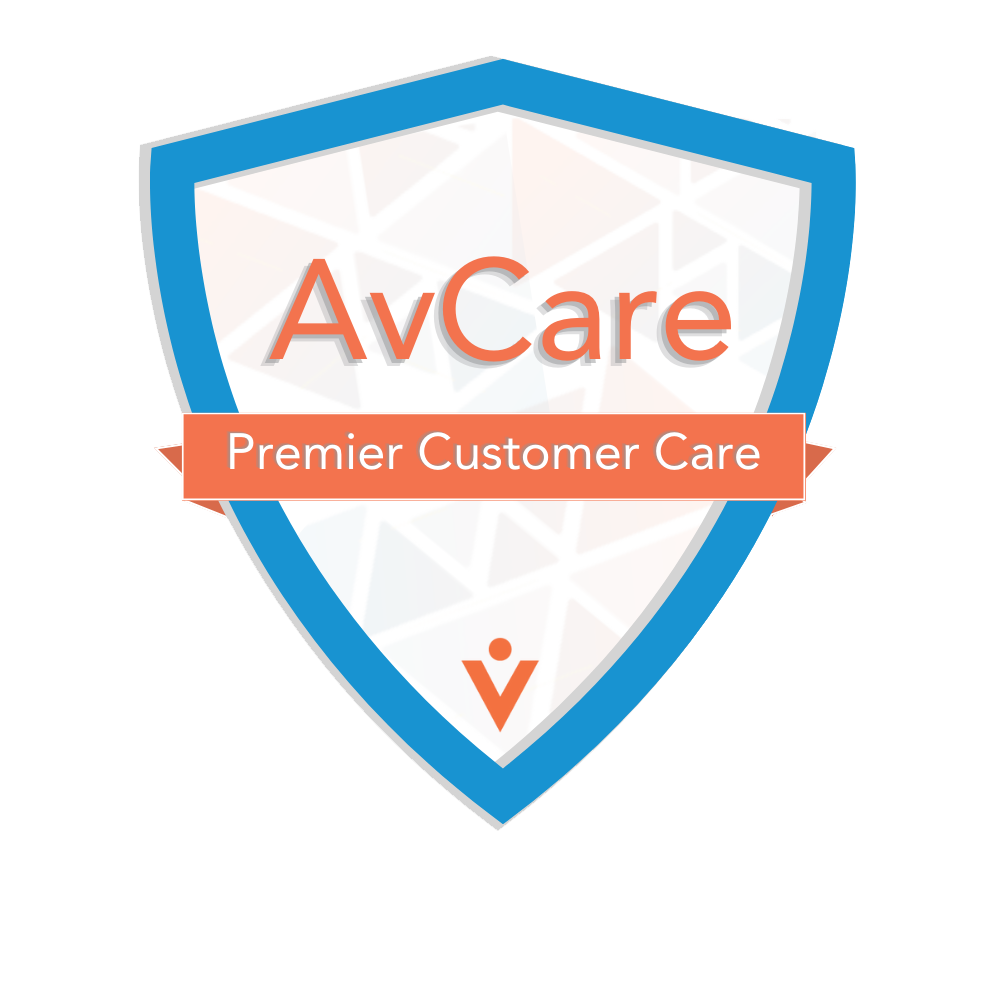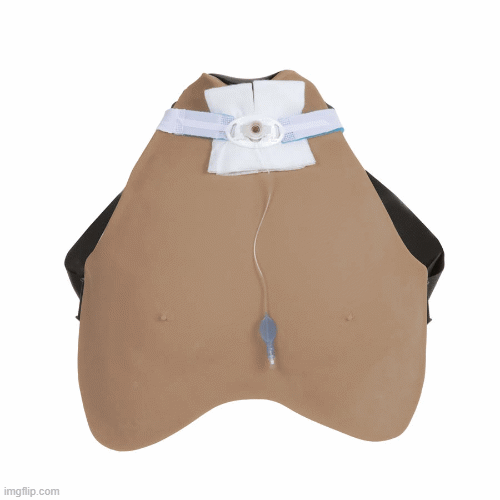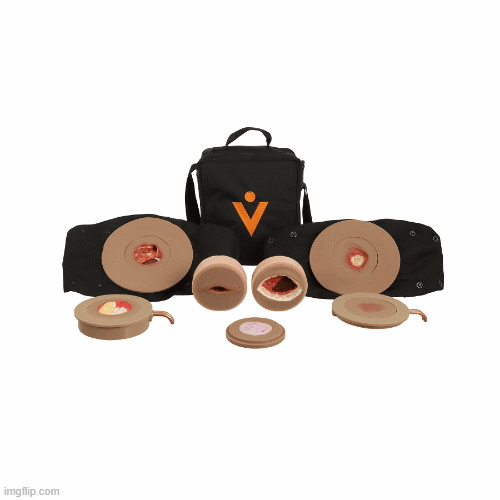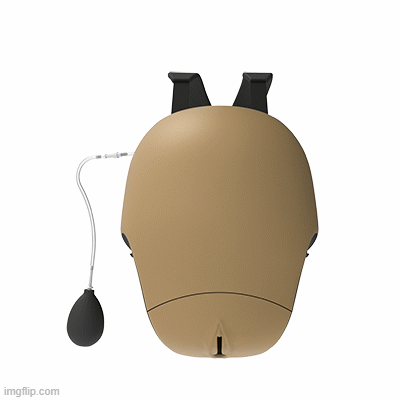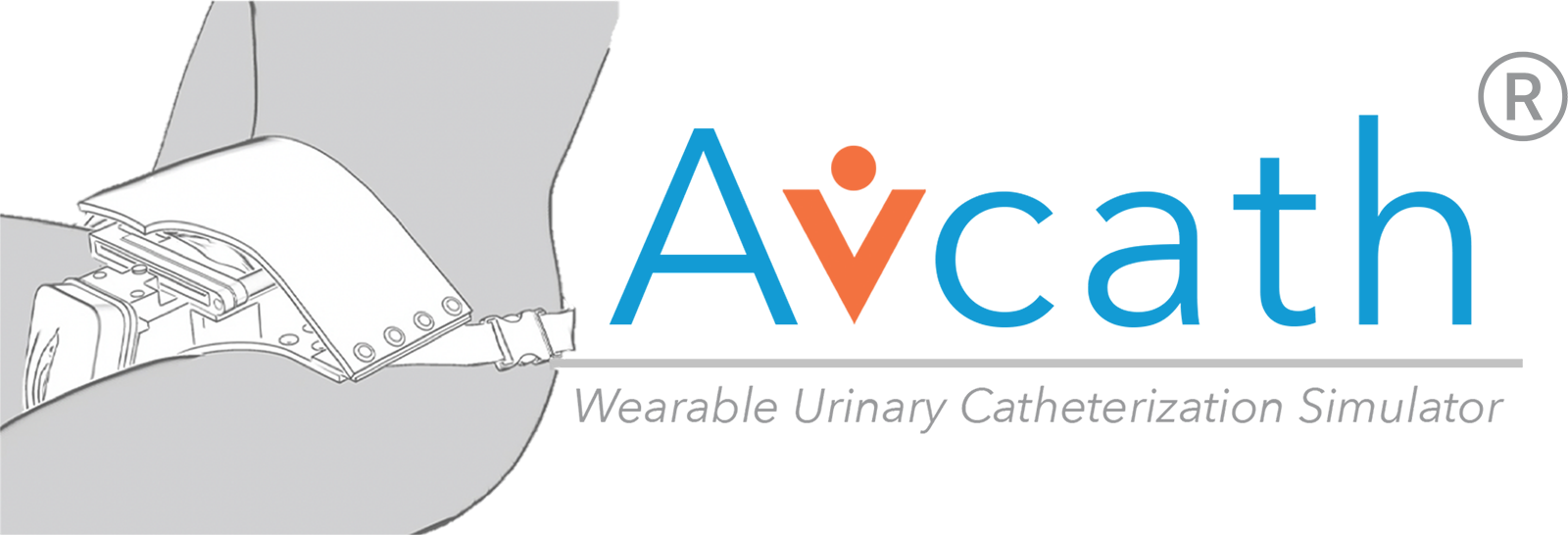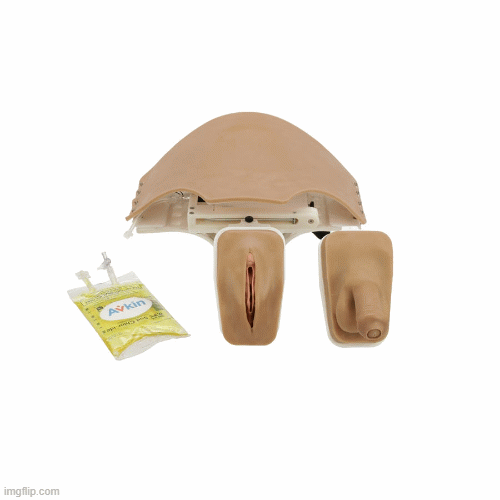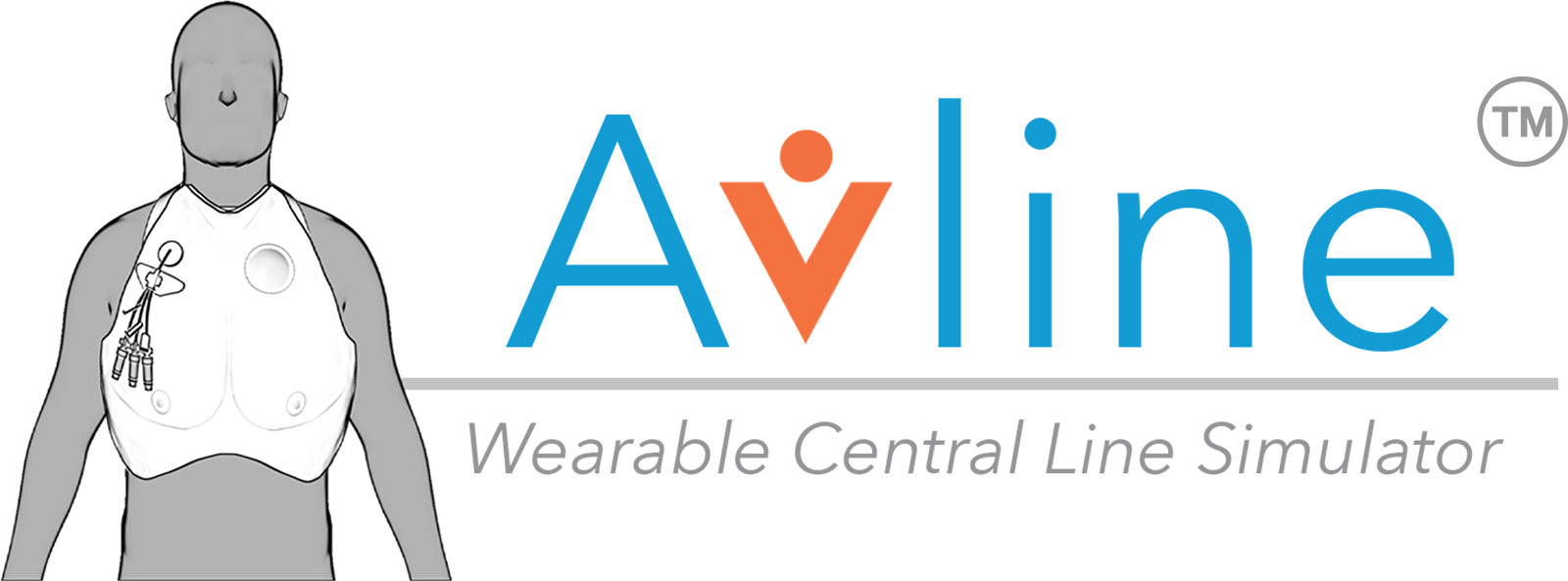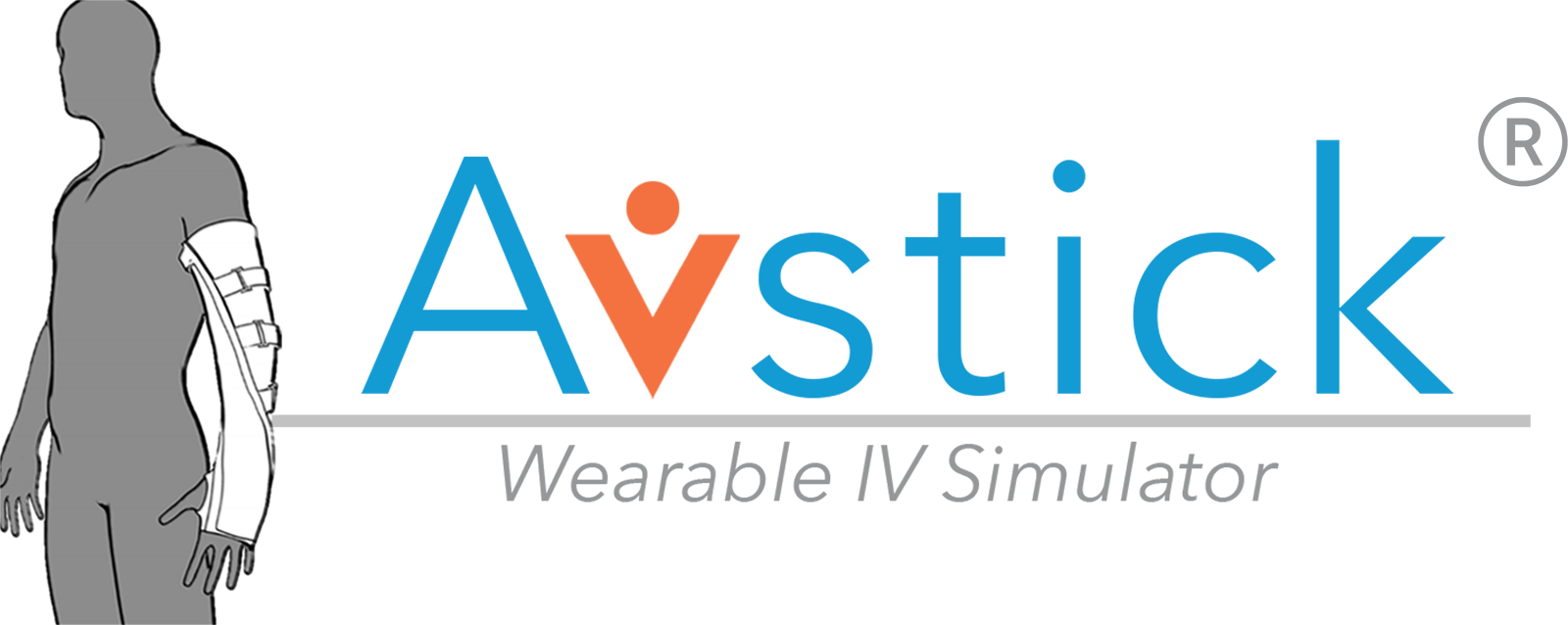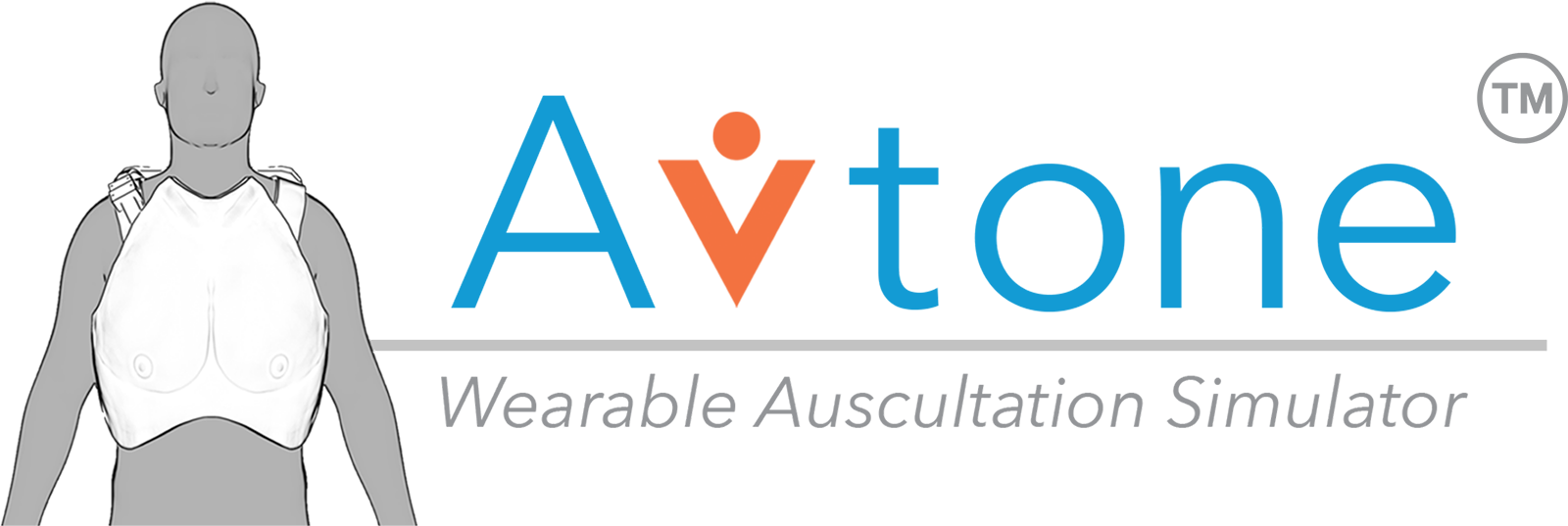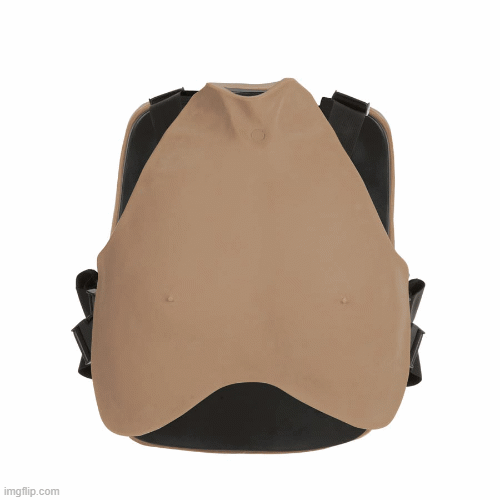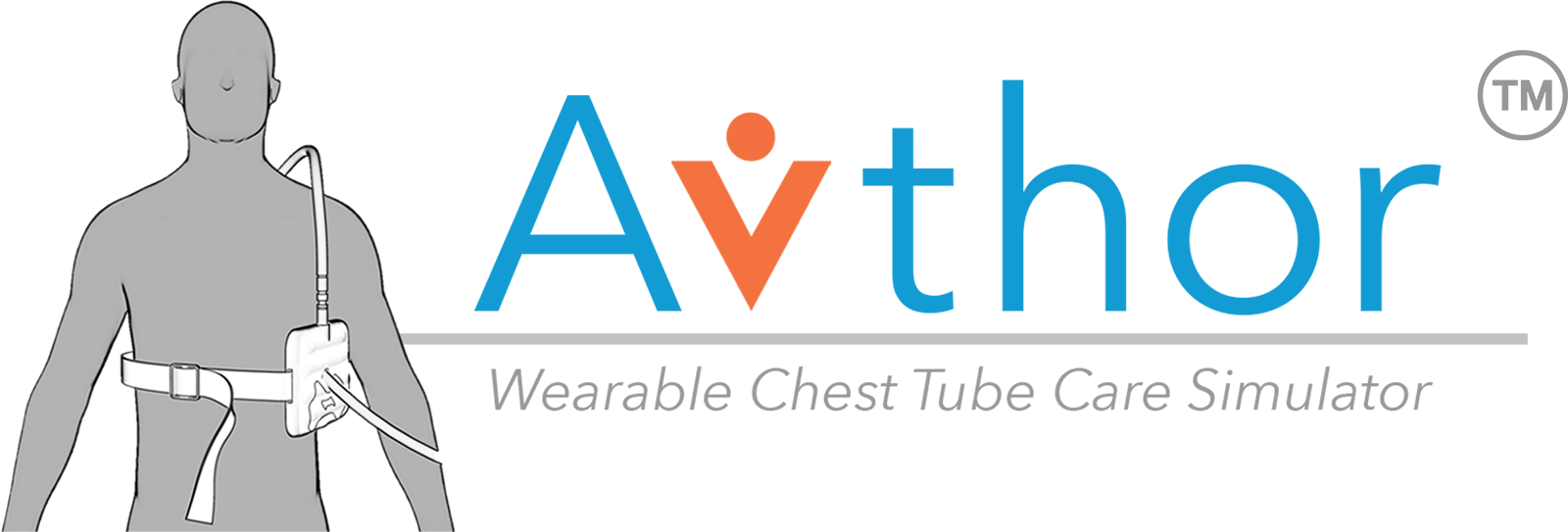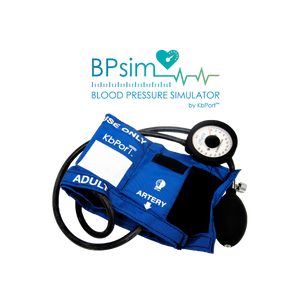How Wearable Simulation Lowers Student Stress and Improves Clinical Readiness: Insights from Simulation Nation
In a recent episode of Simulation Nation, hosts Amy Cowperthwait and Megan Weldon unpacked the results of a groundbreaking study looking to understand student stress levels in simulation, conducted in partnership with Johns Hopkins University. The research compared manikin-based simulation to wearable simulator training using Avkin’s Avtrach, and the findings offer powerful implications for nursing education and clinical outcomes.
Moderate Stress = Maximum Learning
According to Amy, early research conducted at the University of Delaware revealed that students in simulation environments experienced moderate levels of stress—a “healthy stress” that stretches learners to the edge of their abilities without overwhelming them. Cortisol and alpha-amylase levels collected during these studies showed improved outcomes when students were moderately stressed, confirming that this physiological response actually enhances learning and retention.
Comparison of Tracheostomy Competency by Group
Realism Creates Results
Megan highlighted findings fromthe follow up study, executed by Johns Hopkins University, that compared manikin use to simulations using standardized patients (SPs) wearing the Avtrach. Students in the wearable simulation group were:
- 3x more likely to ask questions
- 4x more likely to offer reassurance
- 5x more likely to recognize patient needs
- 6x more likely to self-identify safety errors
Amy explained that the increased interaction likely stems from the human-to-human connection, where students are forced to communicate, think critically, and respond authentically—just like they would at the bedside.
The Bedside Transition Gap
One of the most compelling findings, according to Amy, came from the Johns Hopkins-led study measuring stress during actual bedside care. Students who had trained with wearable simulators and SPs showed no increase in stress levels when transitioning to real patient care, while those who trained exclusively with manikins experienced a significant stress spike.
“This validates what we’ve been saying for years,” said Amy. “The closer simulation mirrors clinical reality, the more confident and competent students become.”
Comparison of Stress Levels by Group
Implications for Nurse Educators and Employers
Megan emphasized that new nurse turnover can cost health systems $20,000–$25,000 per departure. By investing in simulation methods that truly prepare students, institutions can boost retention and ensure smoother transitions into practice.
In conclusion, both hosts agreed: simulation should no longer be one-size-fits-all. When communication and critical thinking are key objectives, wearable simulators and standardized patients provide the fidelity and outcomes today’s healthcare demands.
Read the full study to dive deeper into the research findings and hear why Amy and Megan believe this is a turning point in simulation education.
If you enjoyed our guide to Human Simulation, check out more episodes of Simulation Nation below, and subscribe to our podcast and Youtube so you never miss an episode!
Full Transcript:
Megan (00:00.268)
Hi everybody and welcome to Simulation Nation. Today we are talking about some long awaited research that is finally out. We are very excited about it. So basically we did a research study that was comparing the mannequin and the Avtrach on a standardized patient and looking at what the outcomes are. But this is something that we worked with Johns Hopkins on. And again, it has been a very long time.
He finally got the results back.
But some really cool stuff. Again, very excited to see that this long-awaited research has come in.
And we actually saw outcomes, which I think that that’s also very exciting that with. Yeah. And I think that with research, you never really know what you’re going to get, right? It’s like, again, you never know what you can receive. So it’s been long awaited and there is actually changes. And so that’s all very exciting. So I wanted to really hear from Amy in terms of being able to discuss some of the early days of when you guys were getting started, what you were doing just to get some.
comes.
Megan (01:02.228)
understanding of really what sparked this for you guys to kind of look into doing this research.
Yeah, I’ll say that a lot of a lot of we’ve had a lot of people approach us that are working on getting their PhDs and saying, hey, I’d love to do some research, especially with with, you any in the human simulation realm. Yeah. What can I do? Yeah. And most research projects start small. You started as a small project and it gets bigger. Right. Or you it grows. And, you know, the background behind this is that we had done some really cool things at the University of Delaware and found out some
some information about stress levels in our students. And so that built to another thing, but I want to give you the background behind that story, because it’s really kind of funny. So in 2010, this is way before Avkin was even considered. We had just started with the standardized patients and teaching in a fundamentals course and in mental health course, small class sizes for
what we were doing as far as teaching the standardized patients. But I wanted to study the student’s level of stress in simulation. I don’t really remember exactly why this came up, but I know our dean was a physiologist and I think that somehow that conversation came up. And I remember telling her that I felt like we should study that because I think it was beginning talks about psychological safety and things along those lines. And so.
wanted to study the stress levels of the students just in simulation in general.
Amy (02:37.134)
Yes, but with standardized patients. I again, had I been able to do it, go back and do it, again, this was like a small grant that the university was offering, $20,000, because we had to buy the cortisol tests and things like that. like I remember saying, I think we could do a research study and study their stress levels. Well, what ended up happening, we never ended up publishing on this. So it’s not something that you can look up in the journal articles, but it is, I can tell you that we did the research and I can provide you with the data if you want it.
But what ended up happening was the Dean said to me, well, I don’t think that we actually would get a bump in their cortisol levels or their alpha amylase levels in simulation because when she was at the Arizona State University, she studied students during test taking and there was literally no change in their stress levels. And I said, I do think that students will be more stressed in simulation. And so what ended up happening was we did the testing.
And we had, you have to do a baseline where they draw these levels, a baseline over the course of a whole day when they’re not in stress. So it can’t be, you know, they couldn’t have just broken up with their significant other or whatever it is. And then you have to, you do it during, on a simulation day. And so you take it at several points. I think it’s 10 different points in the day. And what ended up, the results ended up showing was moderate stress. And this is actually what other researchers have found in simulation is that moderate stress,
was the healthy stress. So it’s kind of like what you always heard me say in simulation is that they were being stretched to the edges of their ability, right? You want them to be stressed, but you don’t want them to be so stressed that they can’t think straight, right? And then you don’t want them to be not stressed at all because what’s the point in doing the simulation?
Well, if it’s easy, then it’s just like, Then your Sim’s not right. They’re not learning it.
Amy (04:23.79)
It’s not. Yeah, exactly. Yeah. And so what we found was students with moderate stress had better outcomes or better, you know, on their on their evaluation rubric and hitting outcomes. That was improvement. If they were super stressed, they didn’t have great outcomes. And if they weren’t stressed at all. And again, the reviewers or the facilitators for those simulations were not had no idea. But what we also found was that the students were
Again, this is not the standardized patients. This is the actual participants, the healthcare participants, and for us specifically nursing students, were more stressed for at least up to like five to 10 minutes after the simulation experience. And so before the 3B method even, I think, came out at that point, but we really kind of let them have that diffusing and derolling moments because we realized that if we started going right into the objectives and…
they, you know, picking apart the simulation, really weren’t ready. They needed some time. And so, again, though it wasn’t ever published, the dean was really happy that we actually made some practice changes based off of the information, the data that we got from that grant. But one of my colleagues said, have to start with small grants. You have to start with small bits. And then, you know, when you show that you’re responsible with those small bits, you can get more and more.
That was the first one. then that was before any of the wearable simulators had ever been conceived or thought of. But then we did, once the very first wearable simulator came out. And again, this was before we ever considered starting a company or anything.
This is with the prototype of the product.
Amy (06:03.822)
The engineering students had to look at the efficacy of the prototype. They had to do a small research study to see, was there better outcomes? so what we did was, it was a smaller number, but I think it was 50 students, maybe 70 students. It is a published article, but we looked at, compared multiple different things, and some of the groups were control group, which would have been the mannequin group, and some of those students were
working with the prototype of the Avtrach. At the time it was not called that, but it was called a tracheostomy overlay, because we didn’t know what to call it. But in that situation, what we found was the students that were engaging with the SP wearing the Avtrach were three times more likely to ask questions, four times more likely to offer reassurance, five times more likely to recognize that the patient needed some type of intervention, whether it was communication or something.
and then six times more likely to self-identify patient safety errors. And that was that they broke sterile technique, that they forgot to wash their hands. And this was all of respiratory distress simulation. that was to me, again, very groundbreaking because I didn’t, again, I didn’t really participate in the research. was non-blinded facilitators to that learning experience. when we were…
working on the idea of Av Kent and coming up with, you know, how are we going to start a company and what does it mean to be in business? We ended up getting $175,000 grant in that situation. And when we got that $175,000 grant, one of the things that they wanted us to do was business research. And I don’t know what business research is to this day. I’m not exactly sure what business research is versus academic research. And so
we endeavored to evaluate, kind of take what we had done with both of those studies and evaluate the transition of the learner to actual bedside practice. So the control group in the study was the mannequins and the test group was with our Avtrach and NSP, the learning on that. And then they went to bedside and actually took care of a patient with a tracheostomy. And that was looking at their stress levels as they
Amy (08:29.57)
progressed through. And so it was really kind of, again, now it’s not just comparing these two things in a learning environment with novices, but now, okay, now they’re at bedside and they’re having to show proficiency there. So we tried partnering with several different schools, several different universities that were connected to hospitals because we thought if they was a university that was connected to a hospital, it be an easy transition.
And we also wanted it to be a multi-site study because it multi-site studies have more validity. And so again, we approached several very reputable schools about this and Johns Hopkins was the first to be willing to take it. Vincia, who is the lead author on the project and did a blind share of the research with her grad students. She is the president or…
lead on in the global tracheostomy summit. She’s very passionate about tracheostomy care. Every year she does a global tracheostomy summit. She asks us to Avkin to come down with our Avtrachs. But it was a long time coming. We started the research in 2017. And I really didn’t realize how long it was going to take to complete the study. there
And we really weren’t involved in any of it. It was really handed off. then we had no hand in any of it. So it was also the ability to just say, you you’re going to take this and run with it and not actually have our involvement. So we really weren’t even seeing all the bits and pieces that were happening.
I no idea. No, I really honestly had not I thought it wasn’t gonna be able to be completed because I in some ways I think I over complicated way over complicated things but I really wanted to look at the cortisol levels of the learners in the simulated experience and also at the bedside. And so I guess it just took a lot longer. I really expected the
Amy (10:24.92)
the collection to be done lot earlier. But you know, have to find patients that are willing to consent for the study and you know, all of those things. So it just took a lot longer. again, really, really cool outcomes, which I can’t say I’m surprised at at all. But to find out and have again, I wasn’t a part of it at all. Hopkins ran the study, but they also work with.
weren’t even given a heads up when I was coming out. No, it just came out. It just came out. We found out 30 days late. Yeah. 30 days after it actually came out. So again, it’s those kinds of things where it’s like we didn’t even long awaited, but we didn’t even know that it was.
Yes.
Amy (11:02.002)
Nate found it. I mean, I’m not, you didn’t tell us it was, I mean, when I talked to her from the last global trick, yes to be so much, she said, Hey, I’m working on this. It should be out soon. But that was about six months ago. So again, I just, I had stopped looking and I thought she, maybe she’d let me know when it came out. But anyway, the, the really cool information is that the students that learn with the product and an SP versus the mannequin, they’re
Cortisol and awful amylase levels when they go to the bedside is the same so their their study They weren’t more stressed Whereas the students that learned on the mannequin and went to the bedside were more stressed at the bedside. Mm-hmm. And again What exactly that is? I can’t tell you but I think it’s that human to human you have somebody looking at you You have to explain the procedure you have to do it just like you would do at the bedside, right? This is
this is how I see it, because we talk about from scaffolding levels in terms of inside a simulation, right? Where it’s like, okay, if they’re learning with a peer in the skills lab, okay, they’re learning the skill, they’re more focused on the skill, but they don’t have to focus as much on the communication. And then they go into simulation and now it’s with a standardized patient and they have done the skill in skills lab, but now they have to critically think through a men administration and a difficult airway or something like that.
They’re scaffolding the learning. I think that the difference is that then when they get to the bedside, they’re not continuing to scaffold because they’ve already had to do the interaction component. They’ve already had to do the communication. They’ve already been asked questions that they didn’t know the answers to. So that scaffolding has already happened. When you do it with a mannequin inside of simulation, you still have another level where now you have to talk to a loved one at the bedside. You have to deal with a difficult question that you didn’t expect. So they’re still scaffolding once they get to the bedside.
because simulation can only take them so far. If they’re doing it with a standardized patient inside of simulation, they don’t still have that next level that needed to be achieved at the bedside.
Amy (13:05.578)
I 100 % agree with you. again, the research talks about the fact that there’s cognitive, environmental, and psychological fidelity, right? I mean, it’s as close as they’re gonna get to clinical practice without actually doing it on a human being that actually has a trapezius in place, right? And the idea of practicing as you’re gonna actually practice at the bedside, there’s a lot of validity to that, but this just puts numbers to it now.
just because you have your students in simulation or your learners in simulation and you’re doing it with a mannequin does not necessarily mean that it’s gonna translate in their brains, right? Cause their brains are triggering a higher stress response. It’s not gonna be the same as if they are actually at the bedside. And so how much of the work that you’re doing, how much of the time that you’re investing is actually translating to their clinical environment. And again, we know that
there’s outcomes of studies that have been done with mannequins that show that there’s positive outcomes. But wouldn’t the time be better served utilizing the products and the modality that is actually going to translate to what they’re going to experience when they get into the hospital?
Yeah, I think that the difference too is that I think that with the mannequin research that’s been done, I think that in a lot of ways that validates simulation, right? I think that in the past that was the modality we started with and it validates. Yes, simulation is beneficial. Just sending them directly into clinical after classroom learning and then learning, you know, to inject into an orange, right? And then go ahead and do that on a patient. We’ve learned that a bridge of simulation is valid, but I think that where
this research makes a big difference is it saying, hey, to not have such a large step for them when they get to the bedside, you can actually add in the standardized patient and the wearable to make it so that that step’s not as large. And I will say that I get this a lot in terms of people asking me, like as a standardized patient, know, pretty much like I have people really push back anytime I want to use a mannequin and my SPs get like upset that I’m not using them and I’m using a mannequin.
Megan (15:14.4)
I think there’s times and places for mannequins. Like obviously I do not think that a standardized patient should be in every single simulation, no matter what. There’s going to be physical barriers. Like a code is going to be a challenging one to do. You can’t do that on a live person unless you switch them out and have a live person and then switch over to a mannequin. But I also think that there’s times where if the objectives are about, like I remember we used to do one that was a team meeting and basically in that team meeting,
Which is what we did.
Megan (15:44.238)
it was supposed to get them to determine that they needed to go tell this, the patient that PT was not going to come in that day. And it was supposed to be a very quick and easy, you know, Hey, they’re not going to come in tonight. The SP was not supposed to have a large reaction. She was supposed to be like, Oh, okay. Well, when, when are they going to come in? What’s going, you know, I mean, like it was very mild and the amount of times that we would have it where
Basically, it was a less than five minute engagement with the serious patient, but they were scheduled for an hour to be there in that situation. I’d say, yeah, that’s not like do not spend an hour paying an SP to be there for a potential five minute conversation. There’s other ways to utilize, you know, that scenario again, if they are going to be unconscious the entire time. Things along those lines where I think that there is the right ways of incorporating a live person.
But I think that in the end, when you have these high stakes situations like chest tube, tracheostomy, IV insertion, urinary catheterization, all of these things that are
and require communication and good communication. I think that’s where it’s like, yeah, let’s spend the money or again, make the investment for having that live person where it’s gonna matter the most. And those are the situations where it’s like, I want to be able to show this to deans and people who again, are just looking at the bottom line and saying, sure, the bottom line is part of it. We just did an ROI.
webinar discussing what financial outcomes are going to happen. But it’s also what kind of education are your learners going to have? And I do believe at the end of the day, learners that have worked with standardized patients and the wearables are much more comfortable going out to the bedside. And I think that it has to do with stress levels. And I think that, again, in this day and age with the millennials and Gen X and everybody else who’s going in,
Megan (17:45.656)
there is such high stress levels of even just having to have conversations with patients. Not only the skill, but now just conversations, but being able to have it where if they’re doing it inside of simulation and then transitioning and we’re seeing that that’s a consistent stress level, again, we’re going to make them more incompetent if you’re raising their stress levels when they’re getting to the bedside.
The only other thing I want to point out actually a couple of things. The idea of as me as a nursing instructor, right, I spend a lot of time getting those simulations ready. I spend a lot of time preparing them, making sure all the, you know, the disposables are in there and whatever is needed, right. I spend a lot of time watching those simulations and the briefing on those simulations. If my students can have better outcomes with a specific modality.
I feel validated. feel like my time is appreciated as well, right? I mean, again, every time I go to a place and I start talking about the fact that my students would say, well, if it was a real person, I would have said that. Or if it was a real person, I would have done that. And it basically invalidates what we had just done for the last hour or whatever it was. And it was frustrating because you can’t take that back. so from my perspective as an instructor, knowing that what I’m doing is going to lead to the best outcomes.
that’s going to make them better nurses in the end, that’s what I’m going to want to do, right? But also as leadership, if simulation isn’t cheap, it’s not, there’s no way like they didn’t clinical was quote unquote free for most programs. So they had to pay for the clinical instructors and small groups, but they didn’t have to pay for the site. So this is a capital budget purchase that, that most programs don’t even probably most today don’t even have it built into their budgets, right?
or operational for that matter. But the fact of the matter is if you know that you’re actually doing something that is going to lead to better outcomes for your nursing students, that the employers that employ your graduates are gonna say that these students are head and shoulders above others or whatever it is, the students are gonna come back and say, was so prepared. That’s where the investment should be, right? So I think that that’s one piece of it. The other piece of it is, and I just talked to,
Amy (19:59.15)
one of the leaders, healthcare simulation leaders at a large health system. the turnover is huge for new grads. And she said that it costs them minimum, minimum 20 to $25,000 for every learner that leaves. And I read an article one time and I never thought about this, but if you have a new grad that gets into the hospital system,
and leaves after three months or four months and goes and finds a job and being employed in a completely different profession, you now haven’t just lost a nurse from the profession. You’ve lost a nurse where you counted on them to work from the age of 20 something till they were 60 or 65. So you’ve lost a 40 year experience. those nurses, we wanna make sure that we’re preparing them the best that we can and do everything we can to prevent them from going.
hey, this is hard work, which it is, there’s no joke. But now let’s do it in a way that they are comfortable with uncomfortable.
I think that that’s also where there’s the gap because we feel this regularly and I hear this all the time, but there’s tension between clinical and simulation often. And so I think that a lot of times though, the tension comes from clinical views, a mannequin as playtime, right? It’s not really a person. So I think a lot of times for clinical, they’re kind of like, well, we’ll go do that sim lab thing and then we’ll go talk to the real patients. And then I think that once students are actually at the bedside,
It’s a similar fashion where I think the hospitals use it as like, yeah, it’s not real either. And so it’s kind of this like, well, let’s do nurse residency. And I feel like the problem is, and we’re starting to see this now, but it’s like hospitals are starting to invest in the education component, right? But I think that that gap between undergraduate education and then the hospital is where we’re seeing a big gap. And I think that the issue is that they both blame each other for the problem. And there’s no one really to stand in that gap to help merge those two things together.
Megan (22:03.544)
But I think that when you actually do have a patient who is respected, and again, they view it as like, okay, no, this is a professional, right? I’m not talking about just bringing in an actor. I’m talking about having a trained, standardized patient who does a good job. And then also being able to do the more invasive procedures does start to bridge that gap further because we’re getting closer rather than it just being,
Yeah, I mean, again, that’s the conversation that that we had. I will also say that I think again, hear again, we’ve we’ve met with so many people and gone over so many different curriculums and talk to people about what they’re doing in simulation. We’ve learned so much over the years. And, know, a big thing is that people are still bringing their clinical faculty in. They’re having trouble getting the clinical faculty to love simulation the way we love simulation. And they aren’t taking it seriously. They aren’t coming prepared.
The standards of best practice are very clear that that is not what should be done. But again, the deans and directors have to make all the T’s cross and I’s dot and numbers to line up at the end. somebody, they have to figure out how to manage this. But at the end of the day, simulation faculty or those clinical faculty that are coming in to do simulation need to have simulation training and education. And I would argue that they need to love it.
Not an option.
If you don’t love it, then part of your workload is taken away. Part of your credit hours are taken away and we give it to somebody else. I don’t know. But I think that if you’re not passionate about it, if you don’t have a passion for simulation education, you don’t see the potential, it translates so easily. But I do think that clinical faculty are typically very clinically oriented. They’re taking the students into clinical. So they’re seeing what the students are facing in the clinical setting. They want to make it just like that.
Amy (23:59.438)
in the simulation and once they can see that that can happen, that’s when the magic’s gonna happen. They’re gonna love it as much because then they give them the…
challenges and when they can see the outcomes. think that that’s the biggest thing is that in a way people like simulation is still a new industry and I think that it’s hard for those of us who have been in it for as long as we have because it doesn’t
crazy to think that because we’ve it long time.
It’s new, right? And so it’s that like we’ve seen the twists and turns like we were there when Sarah’s best practice came out and you know, like we’ve seen all of the changeover where it’s like yes, simulation can count for clinical time and like all of those changes have happened, right? And so we are still seeing all of this movement and changes that are going on in the industry. But I also feel like it’s. And I think that this happens a lot and I understand why, but I think as simulationists we also think that it’s like.
I just have to bring them in and show them and they’re gonna love it. Like, of course, like why wouldn’t they not? Of course, this is the greatest thing ever. And I think that because there’s just the assumption that they’re going to love it they’re gonna take ownership of it, there isn’t as much of the follow through. But I think that what we need to be able to do is help them see the transition and see that they can see, okay, this is how it goes from simulation to the bedside. And these are the student evaluations and what the students are saying and all that. I think that that helps validate it.
Megan (25:14.2)
But I do agree with you that it’s like, if you’re going in and you don’t believe it’s gonna work, like it’s kind of the difference of like, again, you take a kid to Disney World and you see that they have magic in their eyes and they love it and stuff. Take an adult to Disney World, they don’t have that same, right? It’s like, it’s not the same thing. There’s a very different experience, but that’s kind of, it’s like, if you take someone who doesn’t like it and doesn’t really believe in it, there’s going to be a lack of investment. There’s going to be a lack of understanding. There’s going to be a lack of passion. And I do think that to get simulation,
to be effective, there does have to be a lot of effort, there does have to be a lot of work, and there does have to be a love for it in a way to put investment inside of it. But I think that you do see the best situations is that when you can also still have someone who’s CHSE certified, knows the standards of best practice, has the education, can vouch and validate it, but then they do have clinical instructors that respect them and respect their opinion, and then they can come in and help.
you know, do their facilitations and bring their students in and things like that. I still firmly believe that having sim staff is the best way. I will always say that I will. there has never been a time I’ve seen an institution that it’s been better the other way. I just think it’s always better when you have sim staff that are running the simulations. But in a situation where you do have your clinical faculty running the sims, I do think that there has to be a level of mutual respect between the two to make sure that it’s going to be validated.
100%.
Amy (26:42.798)
Yeah, I mean I again I think Sam Houston has a great model. Yeah They are they’re not actually some staff. They’re actually clinical faculty or course faculty, but there’s one Designated for each specialty. Yeah, and they do the Sims for that. Yeah, so those people have gotten the training and education They’ve invested in it. They may not love it as much as Brittany does and as gosh what her names to slip in my mind, you know take that out
Amy (27:17.058)
I was gonna say Stacey, I that was right. They may not love it as much as Brittany and Shelley do, but they believe in it, they’re passionate about it, and they’re engaged, they’re fully bought in. And I think that that, again, it took a while for the faculty at the University of Delaware to get that way, but we were able to do that, but the way that we showed them was that it translated to clinical, that the learning was translating to the bedside. And the way that we did it, again, was with SPs.
And the one thing I will say about your comment about not needing SPs for Code Blue, having family members in the Code Blue is really important. it’s one of those things that I talk about because of personal experience as a facilitator. And you want to make sure that they understand that there’s somebody that loves that person and that is connected to that person, even if it is a mannequin, because it does help bring the realism around.
really like more for a code blue if you do it as an evolving case. really like that. I really like that as an evolving case because I think you still get the humanity component of it without necessarily, you know what mean? I do like.
We don’t need to debate it. just want to…
I agree, but I just I think that for me I really I’ve heard that I really like that when that when that is able to happen. Yeah, I think too that the other piece here is it’s like having clinical faculty also be able to be invested in the modality right because I do think a lot of times they would say I prefer to have a live person and I prefer to have a wearable and I prefer to have
Megan (28:48.812)
different options in terms of what my modalities are. But I think a lot of times what happens is it kind of gets gate kept a little bit where it’s like, no, no, no, this is how you’re going to do it. And they don’t get as much ownership in terms of what’s going to happen for the simulation. And I think that that’s also a way to get buy-in is if you are bringing them in and showing them different options and being open to listen and evolve and work together as a team for it. And I think that at the end of the day, we have to get better about that inside of just nursing in general.
but it is about having that mutual respect for one another, recognizing that there’s gonna be benefits of clinical, there’s benefits of simulation, there’s benefits of the classroom learning, and we’re all working together. And we’re all gonna bring different strengths and weaknesses, and we’re all gonna bring different things to the table, but we need all of the different things. And I do firmly believe we will start to see transition when we are seeing nursing students that have had simulation that are now becoming instructors.
Like I was saying earlier, it’s still a new industry. think a lot of times the mindset is, well, I didn’t have SIM when I was in nursing school and I turned out just fine. No, you got to get in there. You just got to do it. That’s the only way you’re going to learn. But I think that when we start to see transition now of having this industry have some legs and it’s students that have had those experiences and they know how they felt coming in and out teaching, they’re going to add more validity to the simulation experience because there’s not going to be that preconceived bias of
well, how I learned or what I did. And I think that that’s gonna start to change over too.
But I will say that I think that that has probably been changing over for the last 10 years. I do think, again, when they see the fact that they have options in the modality and it’s not just stuck to the mannequin based or one specific modality, but they’re choosing the right modality for the right simulation, I think that that’s going to get them excited. But again, if there’s clinical faculty, they’re doing it they don’t love simulation, they don’t often want to change. So we have to give them a vision of what could be and also allow the students to speak to what
Amy (30:48.802)
what is gonna help them as far as their transition to practice, whether it’s them giving post-experience evaluations, which again, many programs do, talking to employers, but the most evaluations that we do in simulation, the students say that they like it, but they don’t have it to compare to anything. And that’s why I really wanted to do a comparative analysis with the research. And then also then now let’s look at it as it transitions to practice, because they can like it better, I can see better.
engagement, can see better outcomes, but what’s it actually mean when they get to the bedside? And to see that that’s actually translating the bedside is absolutely amazing and so exciting for us.
Absolutely. again, this has been long awaited long, very excited about all of that. So thank you, Vincia, for all of your hard work with this research. think it’s really exciting for a lot of work to do for the simulation community at large. again, Hopkins and Johns Hopkins. So thank you guys so much for all of your effort into this research study. And we’re very excited about the outcomes. See you next time.
